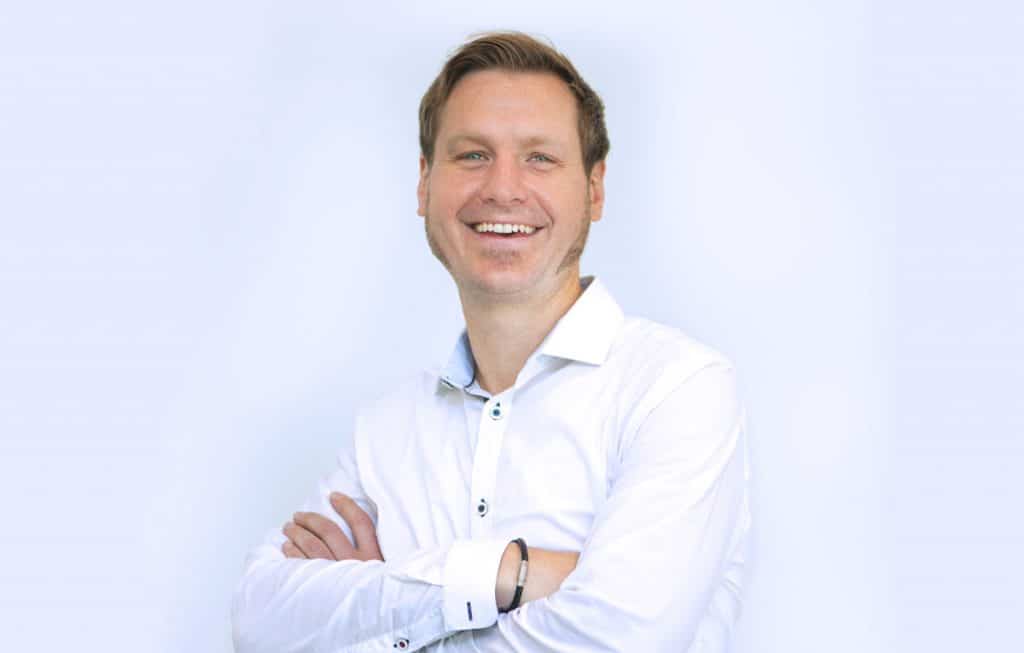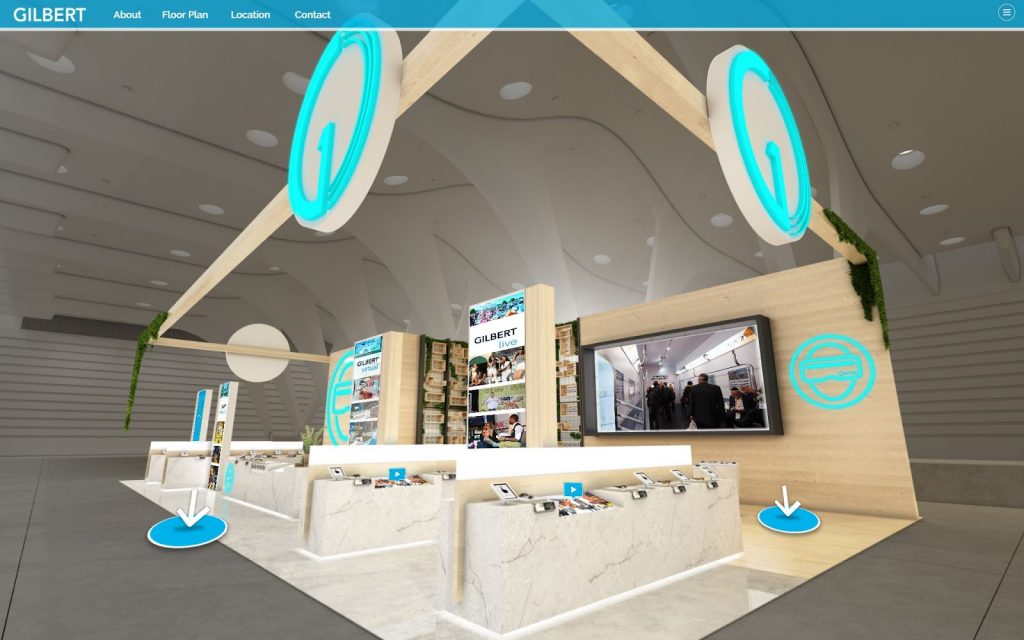July 27th, 2020
We sat down with Chris Silverman, Gilbert’s Creative Director, to get his take on how the COVID-19 pandemic has impacted both his team and the design world these past several months. From working remotely to designing with safety in mind, Chris talks about how the pandemic is influencing creativity.

It’s been almost five months since we’ve been working completely remotely and nearly every part of our lives has been affected by the coronavirus pandemic. Has the pandemic and lockdown changed the way you create? Do you think it’s impacted your creativity?
The remote working situation totally changes the way we function, but in general, I take a positive spin on the whole thing. For me, remote working means that I’m not really stuck to a certain schedule. Deadlines are still deadlines, but I think it’s always weird for creatives to be in a 9-5 scenario; it’s 9 o’clock, so you have to be creative, it’s 5 o’clock, so you can turn it off. I just don’t think creativity really works that way. Ideas come when they come. When you’re in this kind of scenario, you can jump right in when something strikes you, and when you’re stuck , you can step away and come back to it later.
Do you think pandemics force people to be more creative?
The pandemic makes you rethink everything. We typically create spaces for people to interact with each other, but in this new scenario we have to come up with completely new solutions and tools. I think a lot of this was coming anyway; someone just pushed the fast forward button. A lot of the progress that was going to happen in 5-10 years happened right now. Most of history’s inventions came from some need or experience that forced people to use their creativity to adapt or to take a negative and make it positive, and I think that’s what defines a good creative in general. When life gives you lemons, make lemonade.
What’s it been like to collaborate and conceptualize ideas remotely? Has it changed?
I’ve heard a lot of people complain about a lack of collaboration, but I’ve never really experienced that with my team. I think it’s because I have a technologically advanced team to begin with. We’re constantly talking to each other through Slack, and video chats are very helpful. I also use a tablet that allows me to write and mark things up on while the team is watching. I’m also always available to them to reach out to, so I haven’t really experienced that frustration that I’ve heard many other people complain about.
Our brainstorming process hasn’t changed much either because we’ve already used a lot of these tools before. It’s almost easier than in the office because we don’t have two people leaning over the same computer screen. I’m actually thinking of doing a lot of things this way even when we’re back in the office.
How has staying home influenced your creativity? Does isolation limit you or does it make you search for new sources of inspiration?
As I mentioned, I’m a runner, so nature is a major source of inspiration for me. I don’t think you can be a great creative if you sit in front of your computer all day because I don’t believe that inspiration comes only from one spot, it comes from experiencing life. For me, it’s really a question of how you experience life when you’re in isolation.
Here’s a good example. I haven’t been to the Statue of Liberty since I was probably eight years old. I found out that you can virtually tour it the other day, so I did it! It’s a funny thing because if we weren’t in isolation I wouldn’t have done that, but I also probably wouldn’t have gone to the Statue of Liberty. There are also things that we can’t experience like concerts or museums, but I can go to Youtube and stream one or take a virtual tour. Of course we’re limited now, but there are so many things that are accessible in different ways, so I don’t feel devoid.
Speaking of virtual experiences, how is designing for virtual different than for traditional, in-person experiences?
When we design a traditional space, we typically present it in a still shot rendering, so a lot of it is about a composition. We take a 3D space and turn it into a 2D picture, so it’s not only about what you design, but also how you take this “photograph.” With virtual, you can look at the whole thing in 360 degrees. It’s not a new aspect for us, but there is value in showing people how it feels to be inside a space, not just how it looks. I think it’s really cool.
Can you tell me a little bit about the virtual projects you’re working on? What services and products are you launching and what’s your role as a creative director?
Virtual events are interesting because all of the material considerations you make when designing for the physical world no longer apply. When we started exploring it, I knew we could recreate a particular space or trade show experience. It was initially a replacement for something we couldn’t do, but then I started to realize that we don’t have to worry about things like gravity or construction budgets. I can make anything! If I want to make a floating orb or decide that the best thing for my client’s product is to put it in a UFO or something I can do that [laugh], so it really brings you back to the essence of the work we do which is how you tell a story.
I’ve been referring to it as the “magic forest” effect because if I have a client who can tell their brand’s story through a virtual magic forest that you can walk through I can do that and it doesn’t really have the cost implications that it would have if I came up with that idea for the physical world. If we wanted to make a brand’s trade show booth look like a magic forest, the amount of money, energy and logistics would be insane, but we can do that much more easily in the virtual world. I think that has been pretty eye opening.
If we created virtual events only as a bandage because of this moment in time it would be a waste. I think to myself: what would be really valuable? How can we create something that is an enhancement to the experiences that we would have anyway? If everything goes back to normal tomorrow, can we improve the physical experience with the virtual experiences we’ve created?
I have consumer electronics clients with fascinating products. We can stand in their exhibit and turn to a kiosk or touch screen and transport attendees inside a product through a virtual experience and show them the intricate features that you wouldn’t be able to see the same way just by holding the product. We can talk to each other in reality, I can show you a physical object, but then we can also jump inside it; almost shrink ourselves down and experience it in a totally different way. I think that marriage between physical and virtual will have a lasting effect once everything is back to normal.

How is the pandemic shaping design trends?
I think we are still discovering that. The information that we have about the pandemic is constantly changing. For example, in the beginning, everyone was talking about plexiglass barriers and separating people, and now it seems like it makes more sense to focus on open space and air circulation. Another major factor is that what science says and what people feel can be very different. Some people would probably feel safer in a plexiglass box, so I think it’s important to be flexible and also consider emotion when designing these days.
What new trends do you see coming in the next several months/years?
I see the trend of using more outdoor spaces for retail and activations. Pop-up stores have been trending and I think this is something brands should still look at to get their physical presence out there right now. I think pop-ups are the most available and already proven thing to do because being outdoors is already proven to be a safer place than indoors, and I also think people feel safer in the fresh air. Restaurants are a good example here. The way brands will, and probably should, engage with their audience will be in an outdoor setting. The challenge will be how to bring people there. Virtual events have similar challenges. However, these new experiences may attract more qualified consumers who are more willing to engage with your brand.
Is there any design thinking that’s developed during the pandemic that you will include post-pandemic?
Definitely incorporating virtual experiences into physical events. I think companies that are looking to virtual as an extension to their current brand offering are the companies that will be successful because there are things in virtual that we either can’t do in the real world or are cost prohibitive. Thanks to virtual we can tell interesting brand stories from anywhere.
About Gilbert
Gilbert is a turnkey organization that provides design, construction, and management solutions for international clients. Gilbert is providing custom virtual solutions for retail, events, hospitality, and more.
Learn more about our virtual services here.
June 26th, 2020
August 24th, 2020